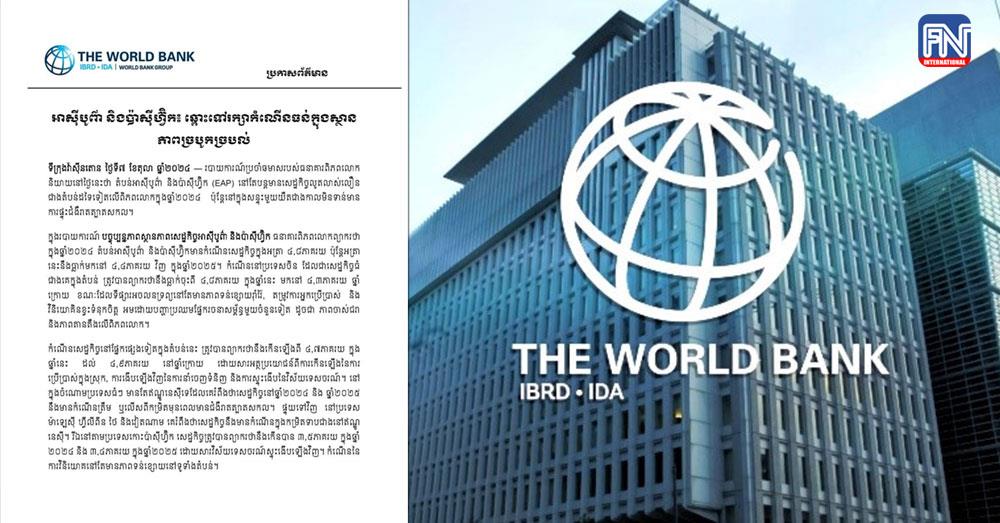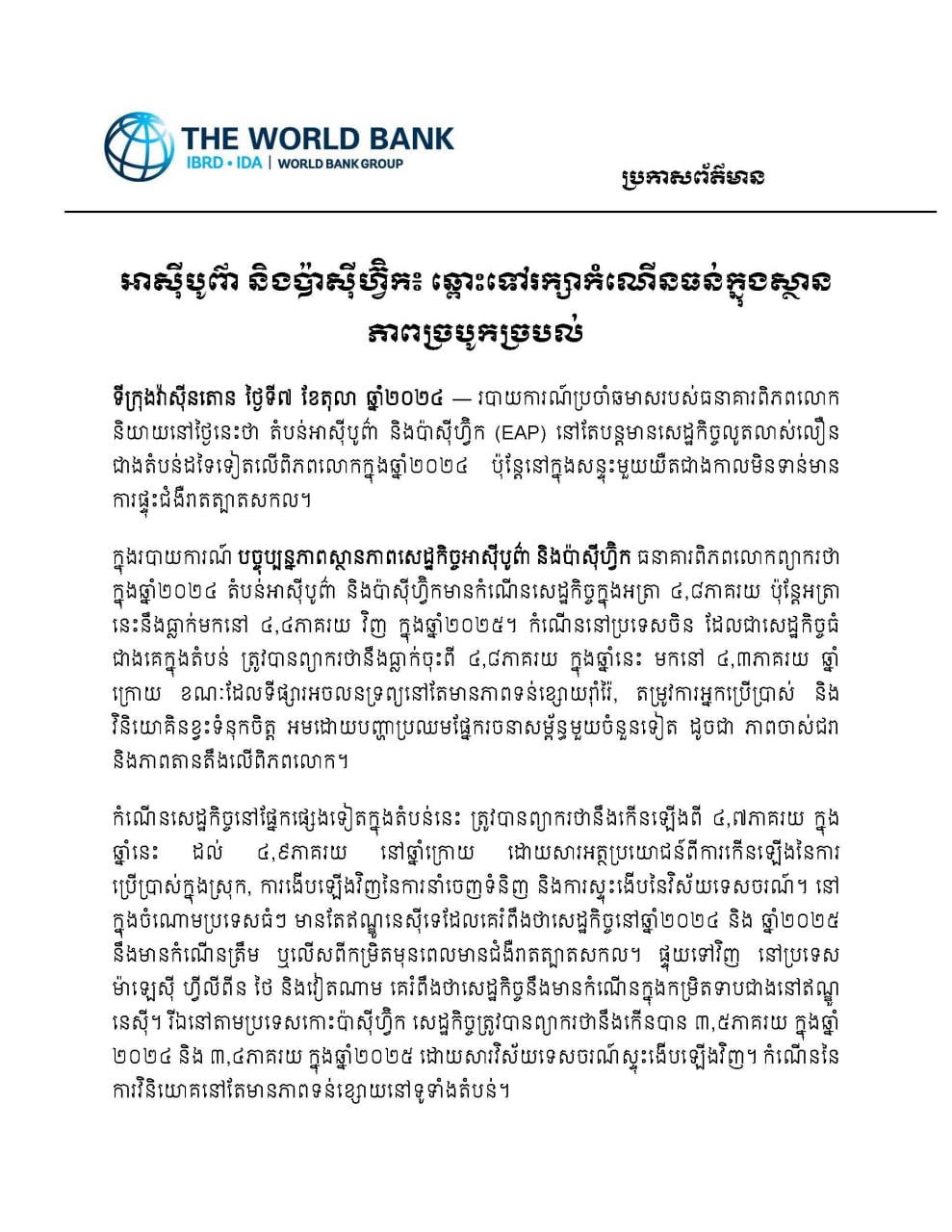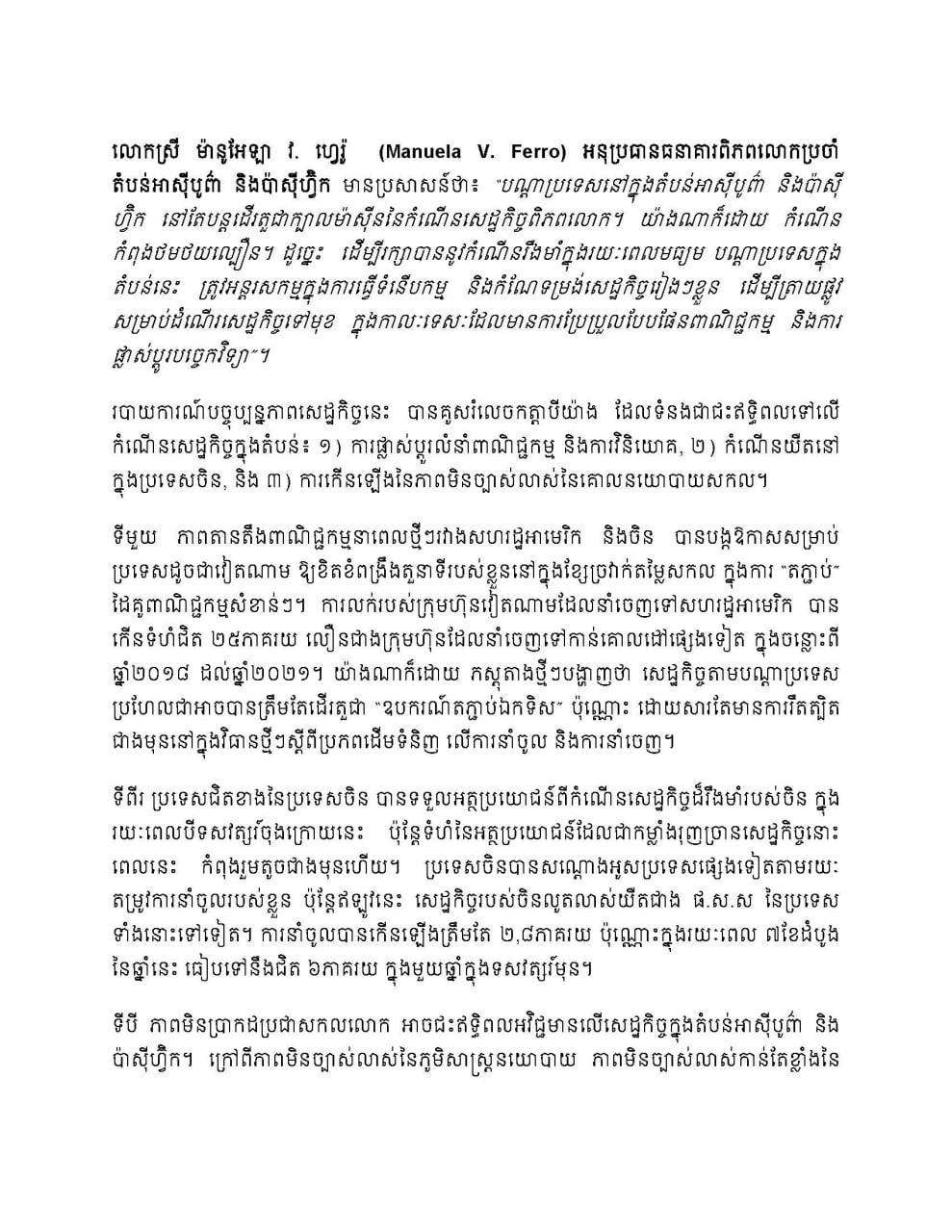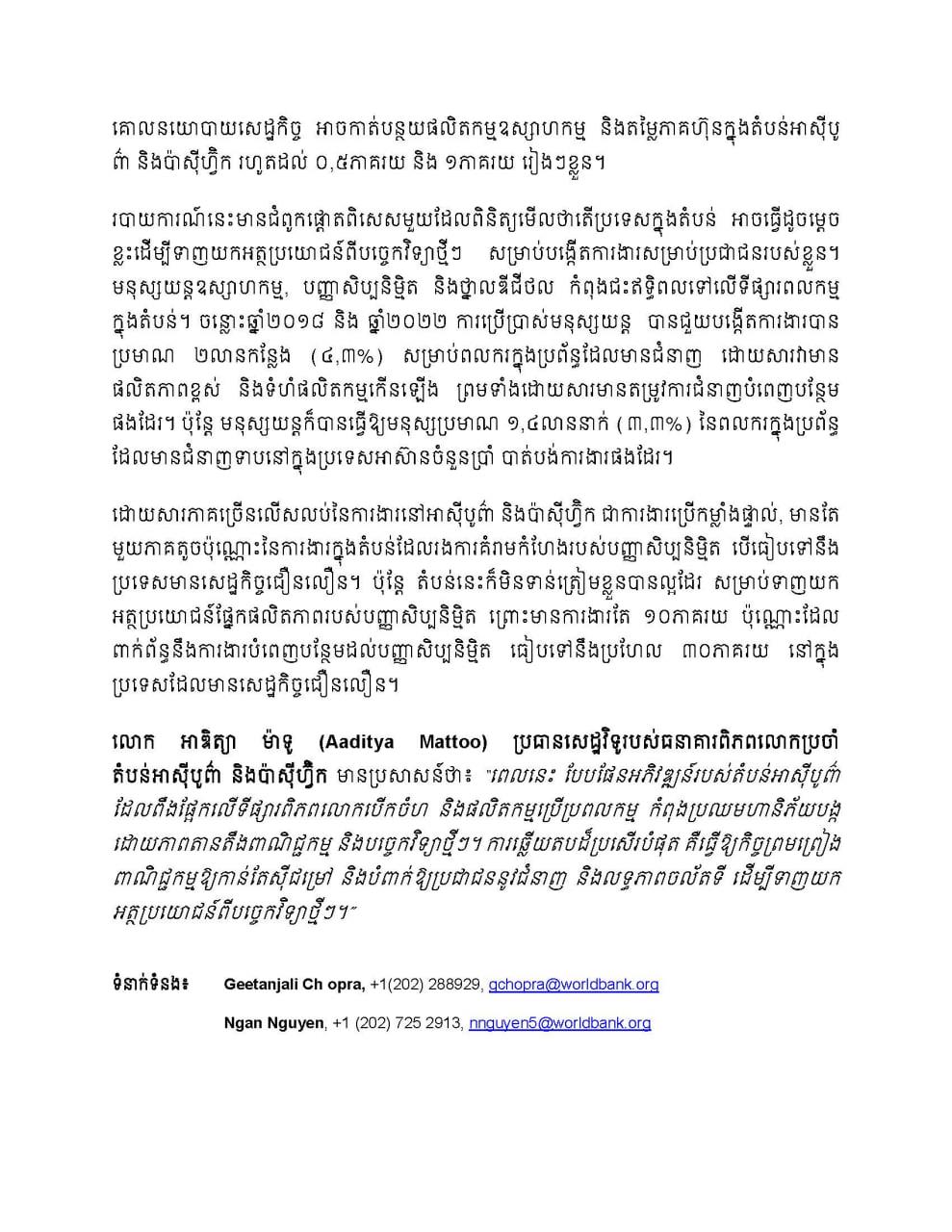Washington DC (FN), Oct. 10 – Developing East Asia and Pacific (EAP) is continuing to grow faster than the rest of the world in 2024, but slower than before the pandemic, the World Bank said in its semi-annual economic outlook for the region – the East Asia and Pacific Economic Update.
The World Bank projects growth in East Asia and the Pacific at 4.8 per cent in 2024, slowing to 4.4 per cent in 2025.
Growth in China, the region’s largest economy, is projected to decline from 4.8 per cent this year to 4.3 per cent in 2025, in the face of persistent property market weakness, low consumer and investor confidence, as well as structural challenges like aging and global tensions.
Growth in the rest of the region is forecast to increase from 4.7 per cent in 2024 to 4.9 per cent in 2025, benefiting from increasing domestic consumption, recovering goods exports, and a tourism rebound.
Among the larger countries, only Indonesia is expected to grow in 2024 and 2025 at or above pre-pandemic levels, while growth in Malaysia, the Philippines, Thailand and Vietnam is expected to be below those levels. The Pacific Island countries are forecast to grow by 3.5 per cent in 2024 and 3.4 per cent in 2025, as tourism recovers. Investment growth remains feeble across much of the region.
“Countries in the East Asia and the Pacific Region continue to be an engine of growth for the world economy," stated Manuela V. Ferro, Vice President of the World Bank for East Asia and the Pacific. "However, growth is slowing. To sustain strong growth over the medium-term countries in EAP must be proactive in modernizing and reforming their economies to navigate changing patterns of trade and technological change.”
The Economic Update highlights three factors that are likely to affect regional growth: shifting trade and investment, slowing growth in China, and increasing global policy uncertainty.
First, recent trade tensions between the US and China have created opportunities for countries like Vietnam to deepen their role in global value chains by “connecting” major trading partners. Vietnamese firms exporting to the US saw sales grow almost 25 per cent faster than those exporting to other destinations over the period 2018-2021. However, new evidence suggests that economies may be increasingly limited to playing a “one-way connector” role as new, more stringent rules-of-origin on imports and export restrictions are imposed.
Second, China’s neighbours have benefitted from its strong growth for the last three decades, but the size of that impetus is now diminishing. China had pulled other countries along through its import demand, but that is now growing even slower than its GDP. Imports grew by only 2.8 per cent in the first seven months of this year compared to nearly 6 per cent per annum in the previous decade.
Third, global uncertainty can negatively impact EAP economies. In addition to geopolitical uncertainty, heightened economic policy uncertainty could reduce industrial production and stock prices in EAP by up to 0.5 per cent and 1 per cent, respectively.
A Special Focus of the report examines how countries in the region can take advantage of new technologies to continue creating jobs for their people. Industrial robots, artificial intelligence (AI), and digital platforms, are affecting labour markets in the region.
Between 2018 and 2022, the adoption of robots helped create jobs for an estimated 2 million (4.3 per cent of) skilled formal workers due to the higher productivity and increased scale of production as well as the need for complementary skills. But robots also displaced an estimated 1.4 million (3.3 per cent of) low-skilled formal workers in ASEAN-5 countries.
Given the dominance of manual-task based work in the EAP region, a smaller share of jobs is threatened by AI than in advanced economies. But the region is also less well positioned to take advantage of the productivity benefits of AI because only 10 per cent of jobs involve tasks complementary to AI – compared to about 30 per cent in advanced economies.
“East Asia’s development model – relying on open global markets and labor-intensive production – is being challenged by trade tensions and new technologies” said World Bank East Asia and Pacific Chief Economist Aaditya Mattoo. “The best response is to deepen trade agreements and to equip people with the skills and mobility to take advantage of the new technologies.”
=FRESH NEWS








